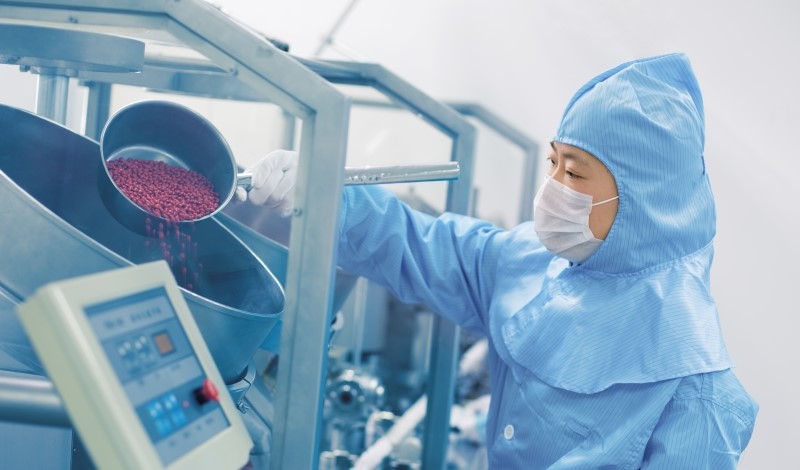
The FTC cracks down on improperly listed drug patents, challenging over 100 patent listings.
Although drug manufacturers have steadily increased the number of patents on their products over the past few decades, they have largely evaded government pushback—until now.
The Federal Trade Commission (FTC) recently challenged over 100 drug patent listings and sent warning letters to 10 drug manufacturers of products ranging from inhalers to EpiPens. Putting drugmakers on notice may deter improper patenting activity. If the FTC pursues enforcement actions against continued misconduct and strikes improper patents, then pharmaceutical monopolies may weaken. But current law and patenting oversight mechanisms may still fail to encourage competition and, in turn, control drug prices.
The U.S. Patent and Trademark Office (PTO) grants various types of patents for pharmaceutical companies. Most commonly, drug manufacturers apply to patent the active ingredient of a drug. But they also, and increasingly, file additional patents on varying dosages, other chemicals related to the active ingredient, methods of use, methods of manufacturing, and unique formulations of the drug, such as capsules or tablets.
To obtain a patent, a drug manufacturer must file an application with the PTO. Patent examiners then review the application to ensure that it is novel, nonobvious, useful, and on a patentable subject matter. The PTO also ensures that the patent application meets specified disclosure requirements. After this review, the agency either grants or denies the patent.
Courts have consistently held that patent requirements set a low bar—such as interpreting “utility” to mean some usefulness but not necessarily relative benefit compared to existing patents—so drugmakers can obtain many different patents on the same product. But there are some limits. For instance, courts prohibit double patenting—patents on the same invention or obvious variations on the same invention.
Still, data trends reveal that such backstops have had little effect on excessive patenting in practice. Abbvie obtained 132 patents on the drug Humira, for example, which a court upheld as a valid practice under antitrust law. Although there are on average 2.7 patents per drug, a 2018 study found that each of the 12 top-selling drugs in the United States had on average 71 patents. Known as patent thickets and evergreening, these practices disadvantage similar drugs seeking FDA approval and result in higher drug prices generally.
If the PTO grants a patent on a brand-name small molecule drug that has been approved by the U.S. Food and Drug Administration (FDA), then the manufacturer may submit the patent to FDA for cataloguing in the Orange Book, a public database of approved prescription drug products and their patents. Once a drug is listed in the Orange Book, a generic manufacturer must wait until the patent has expired, challenge the validity of the patent, or certify that the existing patent would not be infringed by the generic drug in order to receive FDA approval.
As a result, any patents that the PTO grants on FDA-approved drugs create barriers for generic drugs to enter the market—they must either delay entry or engage in expensive litigation. Many generic manufacturers forfeit due to the financial burden, and, in turn, drug prices remain higher because brand-name manufacturers can maintain monopolies.
The Hatch-Waxman Act, which created the current regime for generic drug approval, contemplates some delay in generic entry. But the law limited the types of patents that can be listed in the Orange Book: only patents on either the drug itself or method of use are eligible for inclusion in the Orange Book. Therefore, those patents—and not patents on manufacturing, packaging, and distribution—are supposed to be listed and, in turn, required to be challenged as a condition of generic approval.
In September, the Federal Trade Commission (FTC) issued a policy statement warning that the agency would scrutinize improperly listed pharmaceutical patents. In November, the agency followed through on its promise with over 100 challenges to drug patents listed in the Orange Book and individual warning letters to pharmaceutical manufacturers.
The FTC is challenging patents listed in the Orange Book as improper because they are unrelated to the drug’s substance or method of use. For instance, the agency has uncovered Orange Book listings on eye dropper dispenser caps and straps on inhalers that keep them in place. FTC Commissioner Lina Khan commented: “Over 40 million people in America rely on inhalers. And a lot of the drugs that we see within the inhaler products have been around for many decades, but people are still paying hundreds and hundreds of dollars, and generic use is fairly low.” According to Khan, the agency’s recent actions aim to curb these corrupt practices that exacerbate the crisis of high drug costs.
Although antitrust enforcement offers one approach to curbing problematic pharmaceutical patenting practices, legal scholars raise limits to its potential. For instance, current law allows drug manufacturers to create patent thickets and engage in evergreening, undercutting antitrust efforts that aim to undermine these practices. Even successful antitrust actions are often lengthy, allowing brand manufacturers to reap profits throughout the litigation.
Other approaches offer the potential for more systemic change to the drug patent system. Some scholars contend that the PTO’s fee schedule encourages the agency to grant additional patents, since examiners must reach reviewing quotas and the PTO itself receives issuance fees for patents granted. Others argue that FDA’s ministerial role in the Orange Book facilitates improper listings, advocating a more active enforcement role for FDA in reviewing manufacturers’ patent listings.
The FTC’s recent actions to confront improper Orange Book listings mark an important step toward promoting generic competition and reducing drug prices. But until FDA and the PTO are authorized to police drug patents adequately, the FTC’s efforts may only scrape the surface of drug patenting issues.
